About this book.
The purpose of this book is to give an overview and short description of the latest techniques for in-situ soil investigation using ‘push technology’. It provides information about cone penetration testing, soil sampling techniques and instrumentation on land and rail, near-shore and offshore. More than 25 cone penetrometers, instrumentation devices and samplers are described.
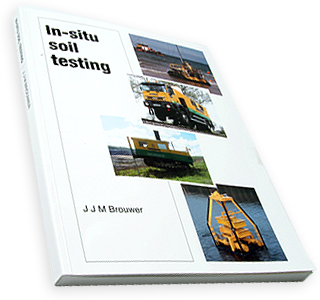
Chapter 1
Introduction
PREFACE 1.1 Cone penetration testing (CPT) is the most versatile device for in situ soiltesting. Without disturbing the ground, it provides information about soiltype, geotechnical parameters like shear strength, density, elasticmodulus, rates... more info >
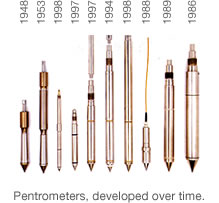
Chapter 2
CF Cone (Cone Penetration Test)
CF CONE (CONE PENETRATION TEST) 2.0 The test is performed using a cylindrical penetrometer with a conical tip(cone) penetrating the ground at a constant rate. During thepenetration, the forces on the cone and the friction sleeve aremeasured. The measurements are carried out using electronic... more info >

Chapter 3
Piezocone (cone penetration test with porewater pressure measurement)
DISSIPATION TEST 3.1 In a dissipation test the porewater pressure change is obtained by recording the values of the pressure against time during a pause in pushing and while the cone penetrometer is held stationary. It is practical to use either a logarithmic or square root scale for the time factor... more info >
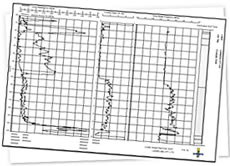
Chapter 4
Part 1
Special cones
Geotechnical cones
CONE PRESSUREMETER 4.1 The cone pressuremeter (Figure 15), also known as the full displacement pressuremeter, combines a conventional 60° cone penetration sounding with the pressuremeter test. The pressuremeter has the same diameter... more info…
Part 2
Special cones
Geo-environmental cones
ELECTRIC CONDUCTIVITY CONE 4.9 Subsoil conductivityIn addition to the measured cone tip and sleeve resistances, the electric conductivity cone (Figure 28) also measures the soilconductivity with... more info >
Part 3
Special cones
Other cones
MAGNETOMETER (for unexploded ordnance detection) 4.12 Unexploded ordnanceWhen developing a new or existing building site, it might be necessary to survey the site for unexploded ordnance... more info >
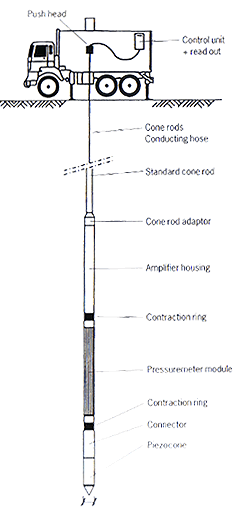
Chapter 5
Sampling Cones
MOSTAP SOIL SAMPLER 5.1 General principlesThe Mostap sampler (Figure 42) enables undisturbed soil samples to be recovered at at chosen depths at a test location. The available sample diameters are 35 and 65 mm, with sample lengths of 1, 1.5 and 2 m. The advantage of the Mostap sampler, compared with... more info >
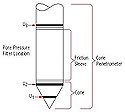
Chapter 6
Instrumentation
STANDPIPE PIEZOMETER 6.1 The standpipe piezometer is used to monitor piezometric water levels.It consists of a filter tip joined to a riser pipe. Readings are obtainedwith a water level indicator. Standpipe piezometers are simple, reliable and relatively inexpensive.The accuracy depends on the skill of an operator. They... more info >
Chapter 7
Onshore Testing
ONSHORE TESTING INTRODUCTION 7.0 A cone penetrometer attached to the end of a series of rods is pushedinto the ground at a constant rate and continuous measurements aremade. The cone penetrometer consists of the cone tip, friction sleeve,any other sensors and measuring systems, as well as the connectionsto the push rods.... more info >
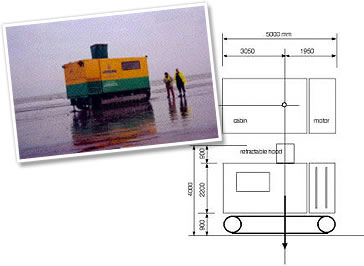
Chapter 8
Push technology in the rail environment
INTRODUCTION(TO IN-SITU TESTING IN THE RAIL ENVIRONMENT) 8.1 Testing on rail tracks is a challenging and difficult task. The work ismostly carried out at night and within short periods of time. Access tothe sites and working areas are often difficult. Until recently, the majority of rail-site investigations have been... more info >
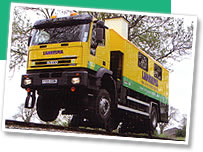
Chapter 9
Near-shore marine testing
NEAR-SHORE MARINE ENVIRONMENT9.1 Traditionally, the near-shore marine environment was defined as water up to 3 km from the coastline and less than 25 m deep. Although still true, progress in the design of plant and equipment since the mid-1990s has blurred the distinction between near-shore and offshore, with offshore equipment now... more info >
Chapter 10
Offshore testing
INTRODUCTION 10.1Further offshore, water depths are too great for jack-ups so vessels areused. Two types of geotechnical investigation can be performed with avessel-based system: a seabed system or a drilling based system. For static operations such as drilling and down-hole CPTs, vessels withthe means to stay stationary have to be... more info >
